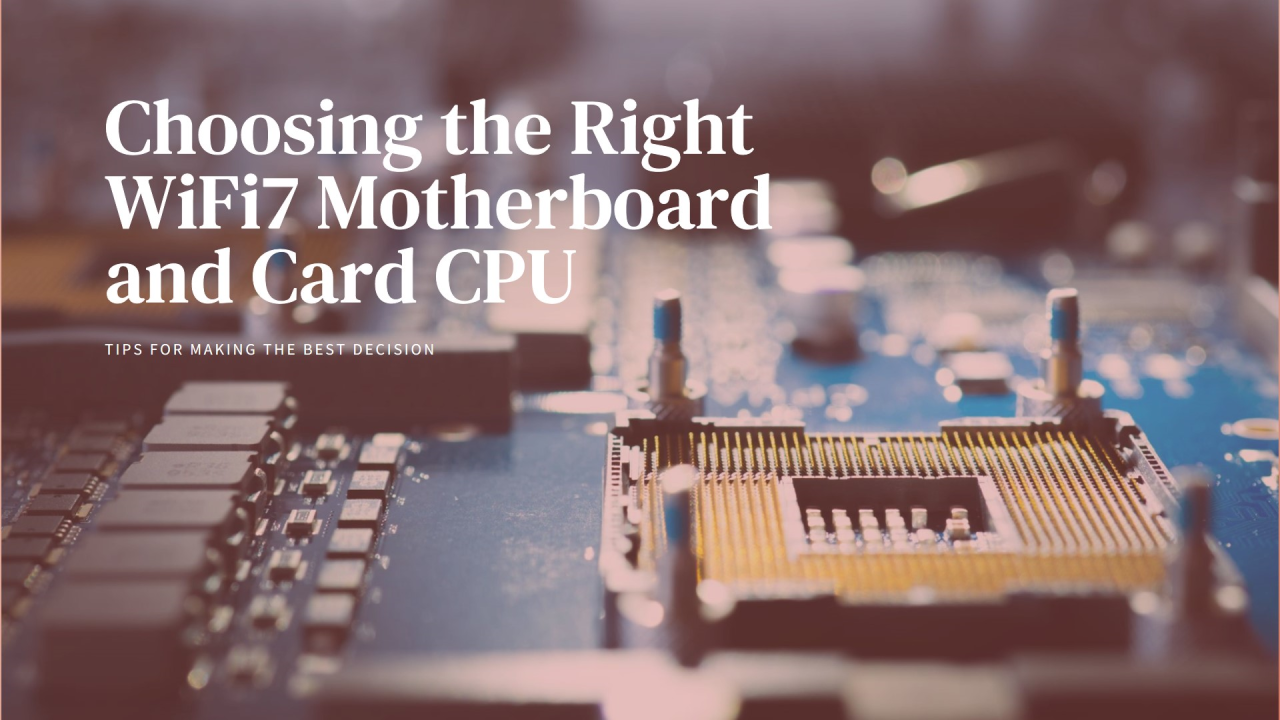IPQ9574-IPQ9554-QCN9274-QCN6274-QCN9224-QCN6224- How to choose a WiFi7 motherboard and WiFi7 card CPU?

IPQ9574-IPQ9554-QCN9274-QCN6274-QCN9224-QCN6224- How to choose a WiFi7 motherboard and WiFi7 card CPU?
2023 WiFi7 has been listed, more and more projects will have a demand for WiFi7, WiFi7 is relatively new, not yet supported by OPENWRT, openwifi, but in the near future, soon will be supported by them!
However, due to the relatively high price of WiFi7, many customers are looking for a relatively low cost to complete the WiFi project, and the performance is also relatively high, so how can Wallys help customers achieve?
First understand the differences between WiFi7 and WiFi6:
320MHz bandwidth: Wi-Fi 7 not only supports the 6GHz band, but also adds a wider 320MHz channel bandwidth, which is larger than the 160MHz of Wi-Fi 6E, and can provide higher data transmission speed. In addition, the channel bandwidth working mode of Wi-Fi 7 is also more flexible, including continuous 240MHz, non-continuous 160MHz+80MHz, non-continuous 80MHz+80MHz, non-continuous 160MHz+160MHz and other ways, with higher flexibility and efficiency. Therefore, in the case of multiple devices connected, Wi-Fi 7 can better protect the connection rate and latency, avoid too much interference.
MLO (Multi-Link Operation), or multi-link aggregation technology, is a very important technology in Wi-Fi 7, which allows **ices to connect to two Wi-Fi hotspots at the same time. This technology can be applied to different Wi-Fi bands, such as 2.4G+5G, 5G+5.8G, and even 5G+6G when the 6G band is opened. The main advantages of MLO are: First, it has faster throughput: by aggregating the network speeds of Link1 and Link2 links, you can obtain higher network speeds. In this way, users can download and upload large files faster, or watch HD videos smoothly.
Multi-RU: In Wi-Fi 6, each user can only send or receive frames on the resource unit (RU) assigned to them, which greatly limits the flexibility of spectrum resource scheduling. To overcome this problem and further improve spectral efficiency, Wi-Fi 7 introduces a mechanism that allows multiple RU to be assigned to a single user. At the same time, in order to balance the implementation complexity and spectrum utilization, the standard specification imposes certain restrictions on the combination of RU. Specifically, small RU (containing less than 242 tones) can only be combined with small RU, and large RU (containing more than or equal to 242 tones) can only be combined with large RU. In this way, small RU and large RU can be used in combination, thus improving the flexibility and efficiency of spectrum resources. By allowing multiple RU to be allocated to a single user, Wi-Fi 7 can make better use of spectrum resources and improve the throughput and performance of the network. This mechanism is particularly important to support high-bandwidth applications and multi-user environments. By imposing restrictions on RU combinations, the standard specification ensures the feasibility of implementation and the efficiency of spectrum utilization.
WiFi7 motherboard will be on the market at present with Qualcomm IPQ9574 or IPQ9554 as CPU, WiFi7 card will use QCN9274 QCN6274, QCN9224, QCN6224. This choice will be a lot more, we can look at the specific needs to choose the appropriate WiFi7 program!
At the same time, the above chips are also divided into commercial grade and industrial grade chips, and industrial grade chips are more expensive than commercial grade. So the specific choice depends on the overall budget of the project









评论